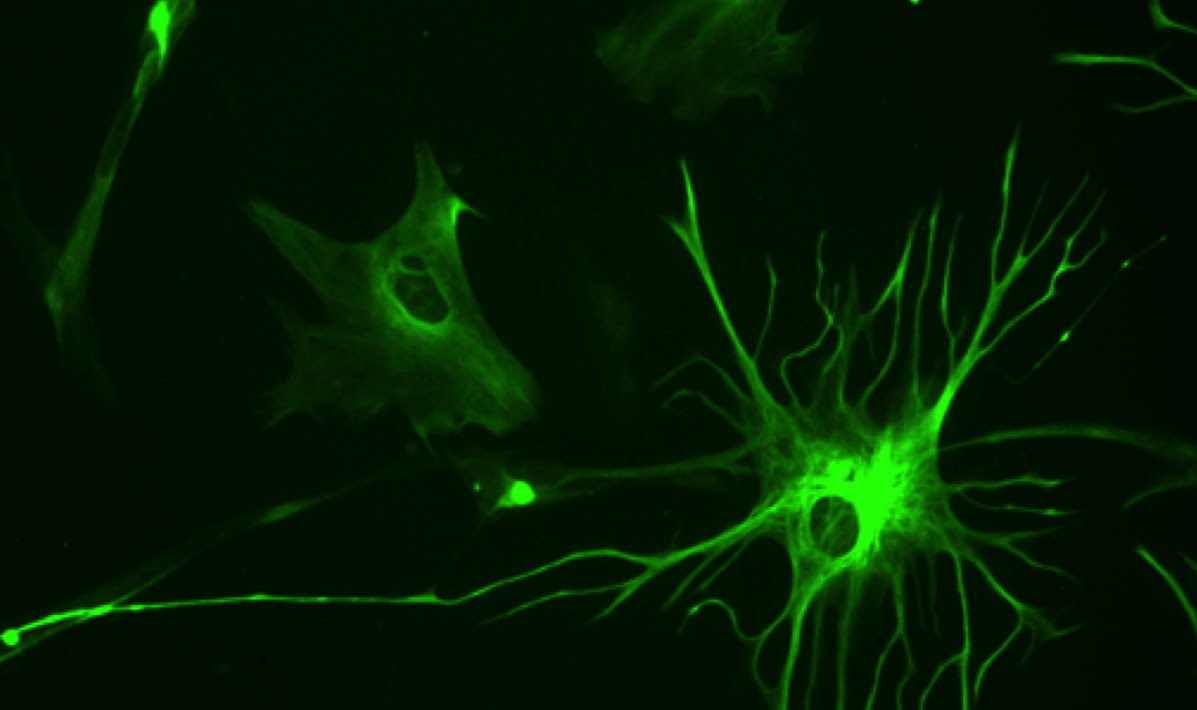“Nerve cells die from stress and are not restored,” you can hear when we are advised not to get nervous over trifles. We decided to check whether the connection between stress and the death of nerve cells was confirmed and whether they were restored.
In works of art it is often possible meet the statement that you should not be nervous, otherwise the nerve cells will not recover. Moreover, this idea is found not only in artistic prose the second half of the 20th century, when neurobiology was just becoming a science, but also fully modern literature. The same thesis is used in popular memes.
All cells in the human body have a similar life cycle. It usually consists of cell formation, division and death. But in two types of cells, the division process is genetically disabled - in mature neurons and cardiac muscle cells. Physiological (ensuring its integrity and adaptive reactions) and pathological (aimed at compensating for the effects and/or consequences of exposure to a damaging factor) processes can lead to cell death. Pathological effects (for example, hypoxia) can be irreversible and reversible. In the case of an irreversible effect, the cell dies, in the case of a reversible effect, it has a chance of recovery. This also applies to nerve cells.
The human nervous system is divided into central and peripheral. The cells of the peripheral system are capable of relatively good regeneration - due to this, for example, they can recover tenderness in a cut off and reattached limb. Cells of the central nervous system are restored longer and more difficult, this determines long rehabilitation after a stroke or spinal injury.
The nervous tissue of both of our nervous systems is made up of two types of cells: neurons and glial cells. Glial cells perform auxiliary functions. They, like electrical tape, cover the neurons. In some diseases, this membrane is destroyed - for example, in multiple sclerosis. However, it is also capable of recovery. Unfortunately, this process does not occur quickly and slows down even more as the disease progresses. Clinical trials are currently underway tests several drugs that can suggest their developers, restore the damaged shell.
Now let's move on to the main cells of the nervous tissue - neurons. A neuron is an electrically excitable cell that receives, processes, stores, transmits and outputs information from the outside. It consists of a core, body and tentacle-like processes: an axon and one or more dendrites.
In case of damage not only to the shell, but also to themselves, the neurons still have the potential to recover. Recently, a group of scientists from the University of Cambridge opened a special protein that allows them to recover. Administration of this protein has the potential to treat glaucoma in humans (as the optic nerve atrophies in glaucoma).
Scientists calculatedthat humans have about 86 billion neurons, 16 billion of which are located in the cerebral cortex. For comparison, in the cerebral cortex black dolphin (or pilot whales) have 37.2 billion neurons, and the African elephant has a total of 257 billion - however, 98% of its neurons located in the cerebellum, not in the cerebral cortex. Up to tens of thousands of nerve cells can die in the human body every day. Then how does a person retain memory and intelligence until very old age? There are several explanations for this.
Firstly, The death of neurons is an absolutely natural process for the human body. And largely thanks to this process, our nervous system is so plastic. For example, roundworms have exactly 162 neurons. They don't die. In the same way arranged nervous system of mollusks and insects. It is precisely because of the fixed number of neurons that these animals are not able to significantly change their behavior and learn.
Since neurons are one of the most resource-intensive cells in our body, the body itself gets rid of from the least active neurons, which have few connections with other cells. The functions of the “killed” neuron are immediately take on themselves neighboring ones, growing in size and forming new connections.
Secondly, neurogenesis (the formation of new neurons to replace lost ones) still exists. It was first reported by Joseph Altman in 1962. He published in the journal Science article “Are new neurons formed in the mammalian brain?”, in which he spoke about his experiment. Using an electric current, he destroyed an area in the rat's brain and injected it with a radioactive substance that could penetrate new cells. A few months later, new radioactive neurons appeared in other parts of the animal's brain. However, at that time his discovery did not arouse widespread scientific interest. The second time neurogenesis was “discovered” almost 20 years later. Professor Fernando Nottebohm of Rockefeller University provedthat the mating songs of male canaries change from season to season precisely because of significant cell renewal in the vocal center of the brain. In parallel with them, Soviet professor A.L. Polenov discovered neurogenesis in amphibians. In 1998, Peter Ericsson and Fred Gage proved neurogenesis in humans. Today it is known that there are at least three sites for the formation of new neurons: the hippocampus, the olfactory bulbs and the amygdala.
However, neurogenesis is not a classical division, but rather a process of transformation. In the case of neurogenesis, the precursor cells are not neurons, but other types of cells - for example, cells glia or stem cells. According to the latest research There are even non-drug ways to improve neurogenesis - in particular, active sports and walking, as well as 3D video games.

Nowadays, the study of neurogenesis is one of the most promising areas of medicine. After all, if we can trigger the formation of new neurons in humans in a controlled manner, we can make significant progress in the treatment of Parkinson’s and Alzheimer’s diseases, as well as make it possible to rehabilitate patients with spinal injuries.
By the way, a person loses the largest number of nerve cells not in the last years of life, but during the intrauterine period - about 70% of those initially deposited. The brain continues to lose neurons further, but not as intensely. There are many reasons for the death of a neuron, one of which is, of course, stress. However, we are not talking about banal worries about problems at work or difficulties in our personal lives. If the body reacted to every stress by destroying part of the nervous tissue, then we would very quickly lose capacity and die. We are talking about really serious external influences. For example, in experiment With rats, periodic electric shocks, the inclusion of sharp and loud sounds, and placing the animals in narrow cages were used as a source of stress. Moreover, after the source of stress was removed, organic damage to their brain remained. Scientists believe that in humans, like all other mammals, similar processes occur under the influence of stress.
Thus, based on the totality of scientific data available today, we can say that stress is indeed one of the factors of cell death, along with many others. Moreover, with reversible damage, nerve cells can recover, and with irreversible damage, the human brain has enough capacity to “supply” new neurons.

Mostly not true
Read on the topic:
- https://www.health.harvard.edu/mind-and-mood/can-you-grow-new-brain-cells
- https://nplus1.ru/news/2020/03/03/genetherapyHD
- http://neuronovosti.ru/novaya-nejromediatornaya-sistema-na-osnove-sledovyh-aminov-sposobna-vosstanavlivat-nervnye-kletki-u-vzroslyh-osobej/
If you find a spelling or grammatical error, please let us know by highlighting the error text and clicking Ctrl+Enter.







